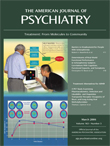Cognitive Neuroscience of Aging: Linking Cognitive and Cerebral Aging
Psychiatry today is firmly grounded in the neurosciences, such as the genetics, molecular biology, anatomy, and physiology of the brain. It is less aware of (and less grounded in) the significant advances in the cognitive sciences, such as attention, perception, and memory. Nevertheless, psychiatry has applied the cognitive sciences through its psychotherapeutic approaches, especially the cognitive/behavioral therapies. Yet the neurosciences and the cognitive sciences are now evolving into the “transdisciplinary” discipline of cognitive neuroscience. And the construct of transdisciplinary is critical to understanding this evolution. Rather than neuroscientists and cognitive scientists simply working in parallel or even working together on the same project (what we typically think of as interdisciplinary), a new “transdiscplinary” breed of scientists is emerging. This new breed of scientists tends to focus upon the extremities of the life cycle—childhood and late life—primarily because both cognitive and neuroanatomical/neurophysiological changes occur at a faster rate during these stages than during the majority of adulthood (and therefore can be effectively studied over a briefer interval). This discipline potentially could become a key basic science of geriatric psychiatry.
In this edited volume, which seeks to become a handbook of the new transdisciplinary field of the cognitive neuroscience of aging, a group of international investigators present the basics of this emerging discipline. In my view, they easily accomplish their goal. The book is divided into four main sections. The first section reviews the main neuroimaging methods, documenting, for example, age-related decline in both post- and presynaptic dopamine markers. This decline is associated with age-related cognitive decline (it is not just acetylcholine). The second section focuses upon basic cognitive processes. With aging, frontal and hippocampal structures that are central to higher-order cognition show decreases in volume, yet these decreases do not map directly onto decreases in basic functions such as attention and memory (the brain, even in later life, exhibits significant plasticity).
The third section focuses upon clinical and applied issues. One area that has received much attention in recent years is the degree to which cognitive exercises (e.g., learning a novel task such as playing chess) might delay or even prevent the onset of cognitive decline in later life. Though few seriously believe that such exercises can absolutely prevent the dementing disorders, such exercises could be protective. Evidence is emerging that such exercises can be minimally effective in later life but are much more effective earlier in life. Nevertheless, recent and more refined studies suggest that certain types of deficits are more prominent in later life (production versus processing deficits) and that interventions may be targeted toward those deficits. In the final section, a group of investigators propose a series of models that can be applied to the cognitive neuroscience of aging. These models emphasize that the brain is an open system and that lifespan cognitive development is a dynamic, cumulative process that shapes the neurocognitive representation of ongoing interactions with the environment and sociocultural contexts through experience. In other words, neural mechanisms not only feed up to cognition and behavior, cognition and behavior feed down to basic neurobiology.
Psychiatrists will perhaps be disappointed because foundational psychological constructs to our field are not explored, such as emotion, motivation, and temperament. We must remember, however, that the cognitive neuroscience of aging has developed to explore the association between the cognition and the neuroscience. The cognitive sciences, although neglected in our studies, are critical to the psychological well-being of our patients.
Reprints are not available; however, Book Forum reviews can be downloaded at http://ajp.psychiatryonline.org.



